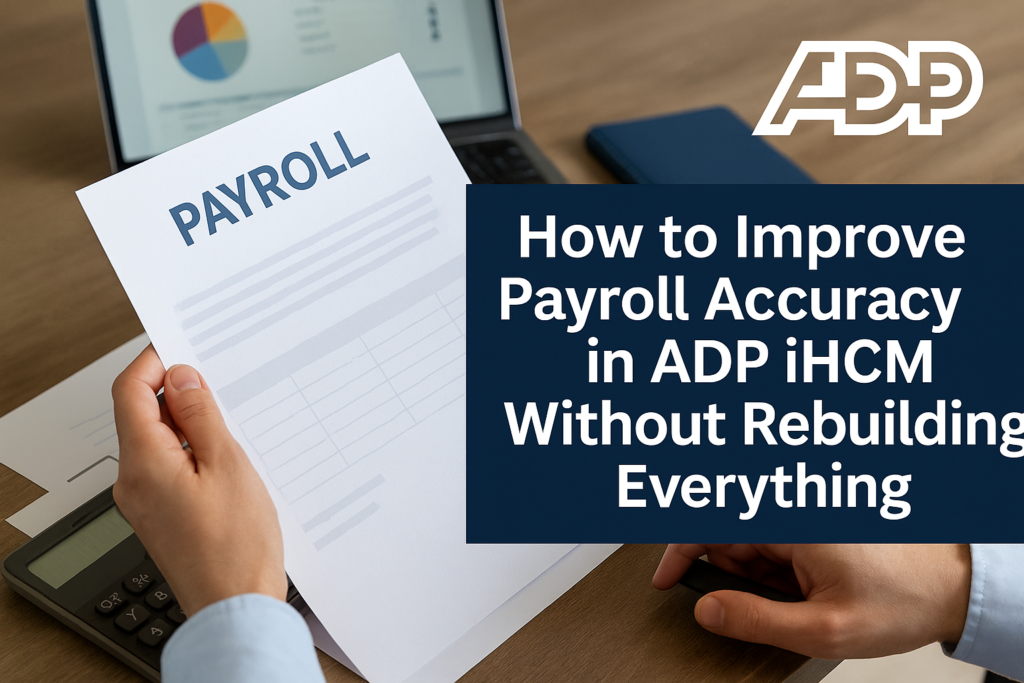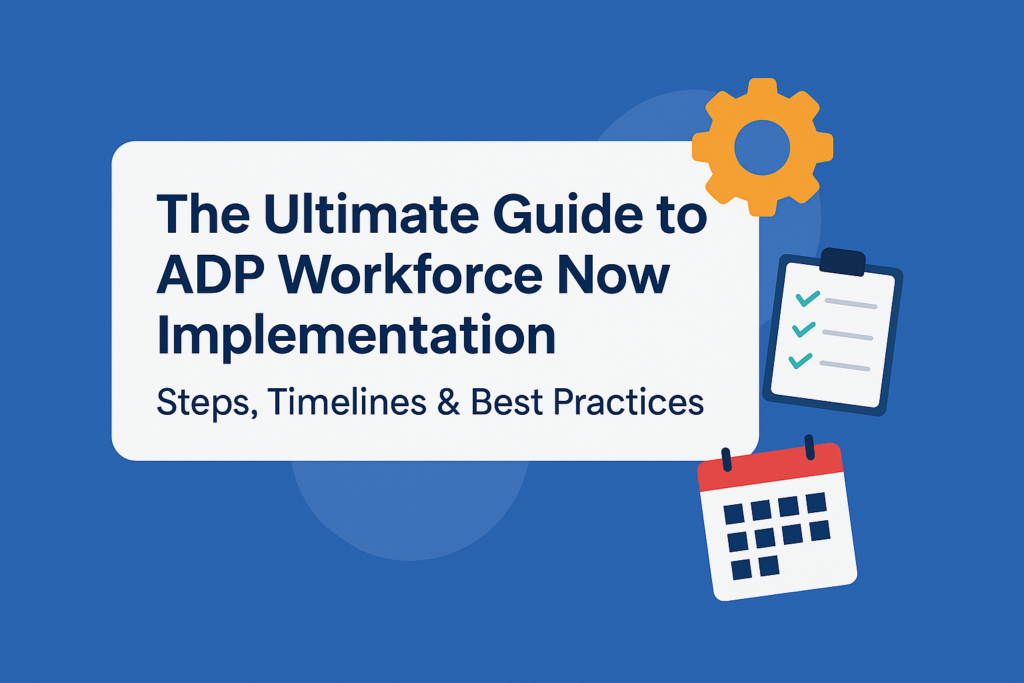Payroll accuracy is a non-negotiable pillar of trust and compliance in any organization. For companies using ADP iHCM, ensuring precision in payroll calculations is critical — but doing so doesn’t always mean tearing down your existing setup. This detailed guide outlines how HR and IT leaders can fine-tune ADP iHCM for better payroll accuracy without a complete rebuild.
Why Payroll Accuracy Matters More Than Ever
Inaccurate payroll impacts employee trust, opens the door to compliance risks, and can incur costly penalties. Whether it’s tax miscalculations, benefits discrepancies, or underpayments, the consequences can be severe:
- Loss of employee morale and retention
- Penalties from HMRC or other regulatory bodies
- Manual correction costs and time loss
- Reputational damage
That’s why fixing inaccuracies within ADP iHCM must be strategic and surgical — not a full-scale system overhaul.
Common Payroll Accuracy Issues in ADP iHCM
Here are the most common issues we encounter during payroll audits for ADP iHCM clients:
| Issue | Description |
|---|---|
| Incorrect Employee Classification | Leads to wrong tax treatment and benefit deductions. |
| Outdated Pay Elements | Old or unused pay codes causing errors in calculations. |
| Manual Overrides | Too many manual adjustments that bypass logic rules. |
| Incorrect Work Schedules | Leads to overtime miscalculations and inaccurate leave accruals. |
| Integration Gaps | Issues syncing time-tracking, HR, or ERP systems with ADP iHCM. |
Luckily, all of these issues can be resolved without rebuilding your entire system.
Step-by-Step Guide to Improve Payroll Accuracy in ADP iHCM
Step 1: Conduct a Payroll Health Check
Start by assessing your current system for gaps. You can use this checklist:
- Review payroll run reports for recurring discrepancies
- Identify high-frequency manual overrides
- Audit historical employee records
- Check GL mapping for accuracy
- Cross-validate pay elements with actual usage
Tip: Use ADP’s native audit and reporting tools or consult with ADP integration experts to build custom audit dashboards.
Step 2: Fix Pay Elements and Logical Groupings
ADP iHCM allows configuration of pay elements by employee type, region, and more. Errors often creep in when these are duplicated or misaligned.
- Eliminate unused pay codes
- Map each pay element correctly with GL codes
- Use consistent naming conventions
Step 3: Audit Employee Data Integrity
Employee master data is the backbone of your payroll calculations. Even small errors can cause major issues. Validate:
- Tax codes and NI categories
- Work schedules and overtime rules
- Contractual salary vs. variable components
Step 4: Tighten Integration Between Systems
Often, payroll data feeds from other systems like HRIS, Time & Attendance, or ERPs. Gaps here can lead to incorrect calculations. Make sure:
- Time entries are mapped correctly
- New hires and terminations sync in real-time
- Leave balances and absence types are aligned
Step 5: Automate Where Possible
Reduce manual inputs by leveraging automation features in ADP iHCM:
- Auto-generate recurring allowances and deductions
- Build logic to calculate bonuses, benefits, and overtime
- Use scheduled reports for pre-payroll checks
Step 6: Train Payroll Admins and Managers
Payroll accuracy improves dramatically when your team knows how to use the system properly. Organize regular workshops on:
- Using ADP iHCM reporting tools
- How to spot common errors
- When to escalate issues to technical support
Step 7: Implement Pre-Payroll Validation Workflows
Introduce a workflow for validating payroll before processing. Include:
- Automated exception reporting
- Approval chains for changes to pay
- Randomized audits for sample data each cycle
Step 8: Engage with an ADP Partner for Optimization
If you’re unsure where to begin, consider a consulting partner like ADPExperts.com. We help companies optimize ADP iHCM without starting from scratch.
Best Practices to Maintain Long-Term Payroll Accuracy
Here are best practices your organization should adopt:
- Document payroll processes and update them regularly
- Run quarterly audits on employee classifications and pay structures
- Review legal and compliance updates from HMRC
- Keep integration connectors updated with ERP, HRIS, and T&A systems
Tools & Reports to Leverage Inside ADP iHCM
Make full use of the built-in tools within ADP iHCM:
- Payroll Simulation Reports – View potential errors before final processing
- Retro Pay Calculations – Review adjustments that span multiple periods
- Custom Dashboards – Build visibility across regions or departments
When You Might Actually Need a Partial Rebuild
There are rare cases where a rebuild is justified:
- System has been misconfigured from the start
- Multiple acquisitions with no harmonization
- Legal restructuring requiring different tax treatments
Even then, you can often segment the rebuild — department-wise or country-wise — to avoid major disruption.
Conclusion: Payroll Accuracy Is an Ongoing Process
You don’t need to start from zero to achieve flawless payroll operations. With a structured review, smart configuration changes, and consistent monitoring, your team can dramatically improve payroll accuracy within ADP iHCM — while saving time and avoiding the massive cost of a full rebuild.
Need help auditing or optimizing your ADP iHCM system? Get in touch with ADPExperts for a free consultation.





